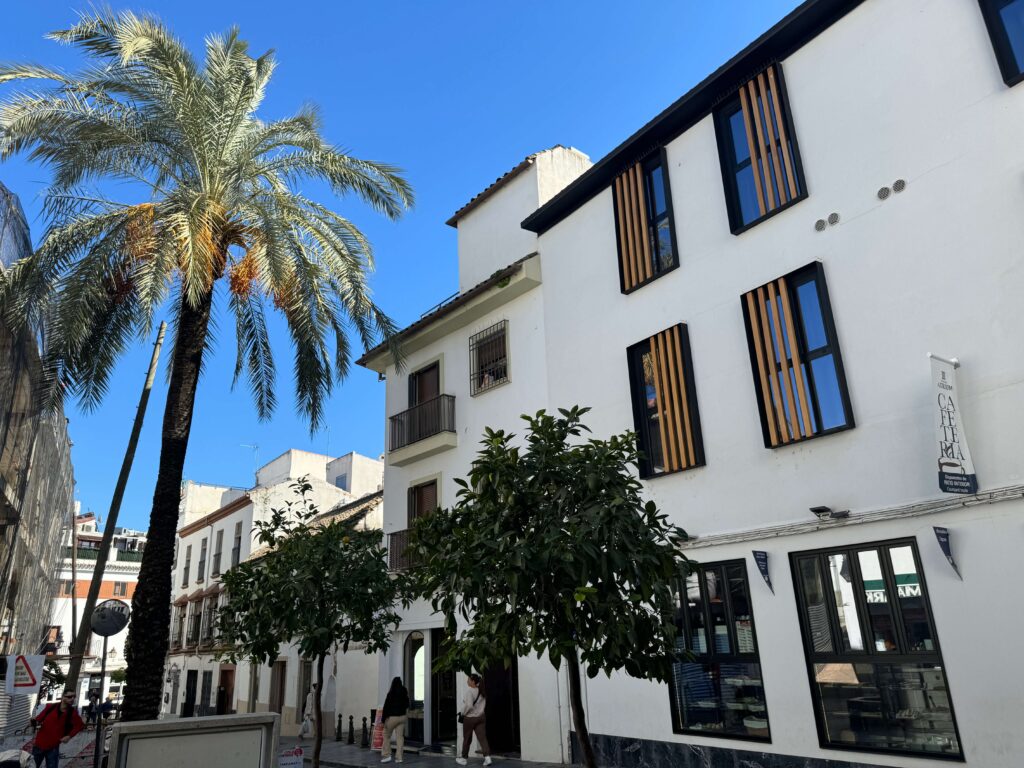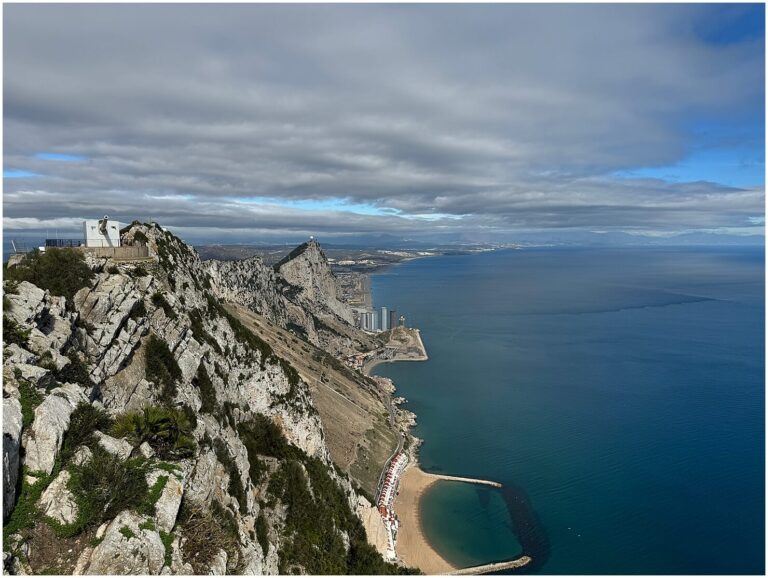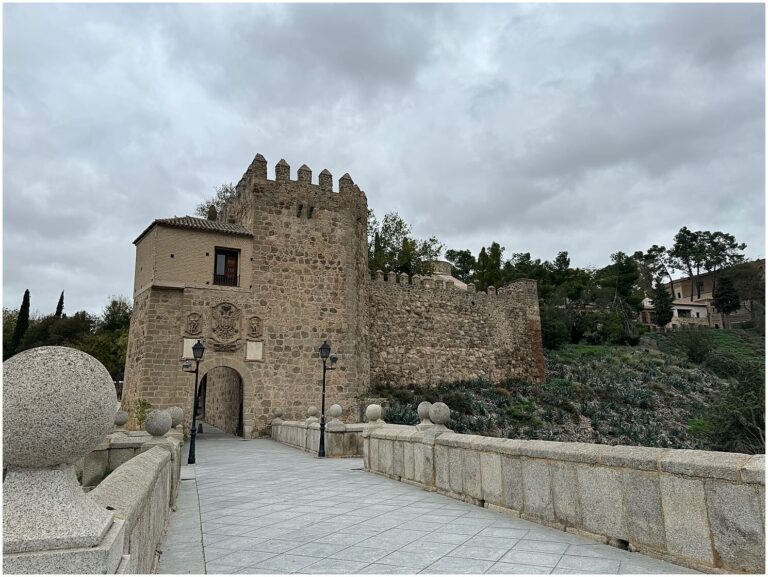Is Spain Tropical? Navigating the Climate Across Spain
Most of Spain is temperate but southern Spain could be considered “subtropical”. Subtropical refers to a climate zone characterized by generally mild temperatures, typically with warm to hot summers and mild winters.
This climate region is situated between the tropical and temperate zones, often marked by a blend of characteristics from both, such as occasional frosts and a mix of tropical and deciduous vegetation.
If you are wondering if Spain is all swaying palm trees, pristine beaches, and a climate reminiscent of a sun-soaked paradise then this post is for you.
In this blog post, we’ll dive into the diverse climate of Spain, exploring towns that could be considered the most tropical in this European gem.
My family and I visited southern Spain in November and it was high 60’s degrees fahrenheit and sunny every day we were there. There were lots of orange, lemon, and olive trees scattered around. It definitely felt tropical compared to November in New England!
From the glistening coasts to the mountainous highlands, Spain offers a mosaic of climates that defy a one-size-fits-all answer to the tropical question.
- Almería: Basking in the Tropical Glow of the Costa de Almería
- Canary Islands: Tenerife’s Tropical Tapestry
- Marbella: Breezy Elegance on the Costa del Sol
- La Palma: The Lush Green Gem of the Canary Islands
- Valencia: The Mediterranean Oasis
- Is Spain weather like California?
- Is any part of Spain tropical?
- Is Spain humid or dry?
- Final Thoughts: Navigating the Spanish Climate Kaleidoscope

Almería: Basking in the Tropical Glow of the Costa de Almería
Location Overview:
Almería, nestled along the southeastern coast of Spain, is often hailed as one of the warmest and driest regions in Europe.
The Costa de Almería, with its sun-drenched landscapes and miles of pristine beaches, contributes to the town’s reputation as a tropical haven.
Climate Characteristics:
1. Sunshine Extravaganza: Almería boasts an abundance of sunshine, with more than 320 days of sunlight a year. This makes it an ideal destination for those seeking a tropical climate without venturing into the traditional tropics.
2. Mild Winters: The winter months in Almería remain relatively mild, offering a respite for sun-seekers even during the cooler seasons.
Almería exemplifies the possibility of Spain being tropical, presenting a town where the sun-drenched Costa de Almería contributes to the allure of a warm and inviting climate.
Canary Islands: Tenerife’s Tropical Tapestry
Location Overview:
While not a town, Tenerife in the Canary Islands deserves a special mention for its tropical allure.
Tenerife, the largest of the Canary Islands, is a volcanic paradise located off the northwestern coast of Africa. Its diverse landscapes, from sandy beaches to lush forests and the dramatic Mount Teide, create a tropical tapestry.
Climate Characteristics:
1. Eternal Spring: Tenerife is often referred to as having an “eternal spring” climate, where temperatures remain mild and pleasant throughout the year.
2. Diverse Landscapes: From the tropical beaches of the south to the cloud forests of the Anaga Rural Park, Tenerife offers a diverse range of tropical landscapes within a relatively small area.
Tenerife challenges the conventional notion of Spain’s climate, introducing the concept of an “eternal spring” and showcasing the tropical diversity that exists within Spanish territories.
Marbella: Breezy Elegance on the Costa del Sol
Location Overview:
Marbella, nestled on the Costa del Sol along the southern coast of Spain, is renowned for its upscale resorts, beautiful beaches, and a microclimate that adds a touch of tropical to this Mediterranean paradise.
Climate Characteristics:
1. Mild Winters: Marbella experiences mild winters, making it an attractive destination for those seeking a tropical escape even during the off-season.
2. Sea Breezes: The town benefits from refreshing sea breezes, contributing to a comfortable climate, especially during the warmer months.
Marbella represents a town where the combination of balmy winters and refreshing sea breezes adds a tropical elegance to the renowned Costa del Sol.

La Palma: The Lush Green Gem of the Canary Islands
Location Overview:
La Palma, another jewel in the Canary Islands, stands out for its lush green landscapes and a tropical ambiance that contrasts with the arid charm of some mainland regions.
Climate Characteristics:
1. Laurel Forests: La Palma is home to enchanting laurel forests, adding a touch of tropical mystique to the island. These forests thrive in the humid conditions, creating a unique ecosystem.
2. Mild Temperatures: Despite its tropical greenery, La Palma enjoys mild temperatures, making it a comfortable destination for nature enthusiasts.
Is Spain Tropical Keyword Usage: La Palma challenges preconceptions, showcasing a tropical side of Spain defined by lush greenery and unique laurel forests.
Valencia: The Mediterranean Oasis
Location Overview:
Valencia, situated on the eastern coast of Spain, is a vibrant city known for its futuristic architecture, rich history, and a Mediterranean climate that infuses a tropical touch into the urban landscape.
Climate Characteristics:
1. Hot Summers: Valencia experiences hot and dry summers, inviting residents and visitors alike to indulge in the tropical feel of the Mediterranean sun.
2. Mild Winters: While not as warm as some southern regions, Valencia enjoys mild winters, contributing to a year-round appeal for those seeking a tropical city experience.
Valencia exemplifies the blend of modern urban living with a Mediterranean tropical vibe, challenging perceptions about Spain’s climate.
Is Spain weather like California?
Southern Spain’s climate is a lot like Southern California. Dry and mild temps year round.
Is any part of Spain tropical?
Technically no. Southern Spain is sub tropical.
Is Spain humid or dry?
Southern Spain is dry. There are lots of cacti growing around Andalucia.
Final Thoughts: Navigating the Spanish Climate Kaleidoscope
The southern parts of Spain are sub-tropical but too far from the equator to be tropical.
I hope this blog post helps you to understand the diverse climates that exist within this European gem.
Whether you seek the tropical warmth of southern coasts or the lush green landscapes of the Canary Islands, Spain invites you to navigate its climate kaleidoscope, offering a paradise for every type of sun-seeker and nature enthusiast.

More Resources:
Our Favorite Spots in Andalucia Spain





